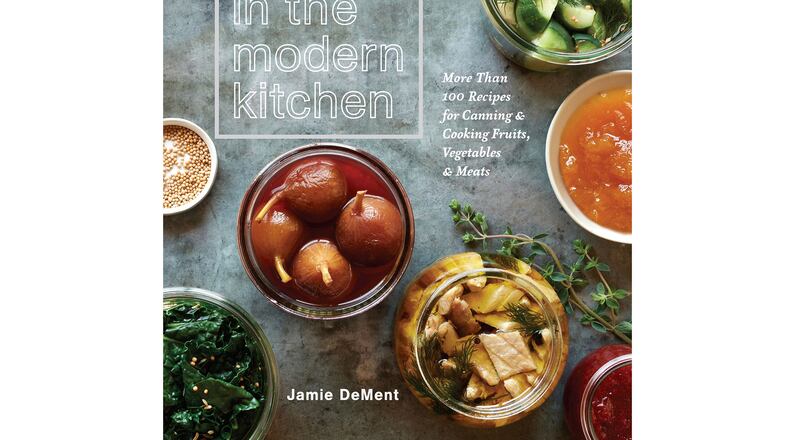Jamie DeMent believes in the honesty and integrity of fresh food. She knows it’s something you shouldn’t really mess with.
The best thing you can do with field peas, corn, squash and tomatoes, she seems to say in her work, is to eat them the minute they are picked.
The next best thing is to preserve them for later, when the fields and deep-freezers are barren. That’s the smarter choice, perhaps, the road less traveled that makes all the difference.
Last year, this North Carolina farmer, cook and restaurateur published her first cookbook, "The Farmhouse Chef: Recipes & Stories from My North Carolina Farm" (UNC Press, $35). And I took quite a shine to her simple, straightforward approach to the heirloom produce and heritage livestock she nurtures on her Hillsborough farm with her husband, Richard Holcomb.
Now I’m just as smitten (possibly more so) with the blackberry jam, peach salsa, bread-and-butter pickles and numerous other delectable preserved foods she showcases in her second effort.
DeMent prefaces her hundred-plus recipes with the basics. Thankfully, she doesn’t belabor the process part. Just a soupçon, as it were.
Clearly and authoritatively, she explains the principles of water-bath and pressuring canning. When putting up low-acid foods (green beans, potatoes, soups, stews, and so on), pressuring canning is required for safety reasons. No exceptions!
The method for preserving high-acid fruits and veggies (tomatoes, pickles, acidulated jams), however, is totally low-tech. It doesn’t require much of an investment, either: basically a large pot with a lid, a rack for protecting fragile glass jars from the flame, perhaps a jar lifter (to save your hands from the hot water).
Don’t make this hard, people.
Starting with unadorned peaches and pears, and moving on to jellies, jams, sauces, juices, meat and fish, DeMent makes it all seem so hassle-free, foolproof, delicious.
I love how some of her seemingly arcane practices hark back to the days when refrigerators, freezers and store-bought shortcuts didn’t exist.
Happily, I don’t see a single recipe calling for manufactured pectin. And the instructions for putting up deboned meat, salmon, spaghetti sauce, etc., are a revelation—stuff I don’t normally mess with because I don’t own a pressure canner.
Apparently, there’s little you can’t put up in a jar. DeMent even cans greens—who does that? (They look fantastic, by the way.)
Admittedly, though, there are some foods that shouldn’t be kept under glass. She covers a handful of those (pesto, chocolate sauce, caramel) in a final chapter cleverly called “Freeze These.”
In some cases, this thrifty cook uses one canned concoction to conjure another: Pickles become relish; tomatoes, chili; roasted tomato sauce, barbecue sauce. And so on.
She seals the deal by closing each chapter with recipes for using the fruits of one’s labor: As always, she keeps it simple, too. Jars of corn and butterbeans are combined to make succotash. Meat or veggie broth and salsa goes into black-bean soup. Apple jelly or cranberry-orange curd is the filling for a jellyroll.
I’m a fairly dedicated canner, and I own a lot of books on preserving food. Many of them are cluttered and repetitive; few of them really teach me anything new (aside from flavor profiles and pectin workarounds). “Canning In the Modern Kitchen” is different. It demystifies an art that is foreboding and precious to many.
Once again, when I least expected it, Jamie DeMent, sly as fox and smart as a whip, has hooked me.
“Canning in the Modern Kitchen: More than 100 Recipes for Canning & Cooking Fruits, Vegetables & Meats” by Jamie DeMent (Rodale, $24.99)
Wendell Brock is an Atlanta-based food and culture writer, frequent AJC contributor and winner of a 2016 James Beard Foundation Award for journalism. Follow him on Twitter (@MrBrock) and Instagram (@WendellDavidBrock).
RELATED:
Read more stories like this by liking Atlanta Restaurant Scene on Facebook, following @ATLDiningNews on Twitter and @ajcdining on Instagram.
About the Author
The Latest
Featured

